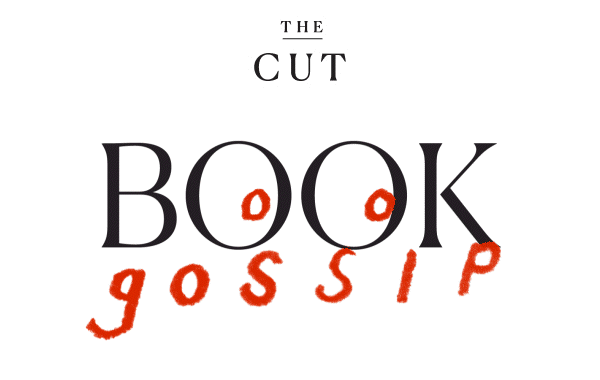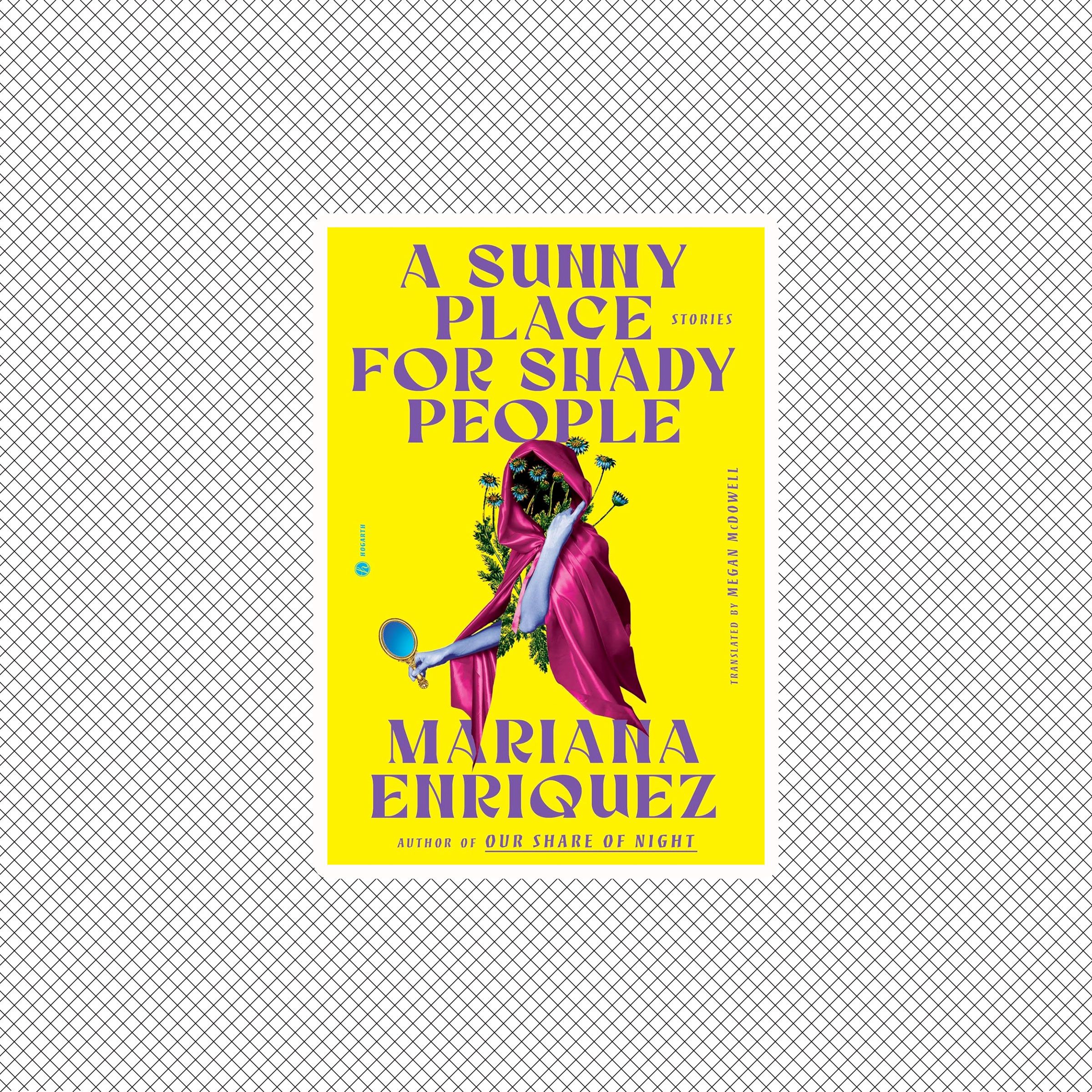Every product is independently selected by our editors. Things you buy through our links may earn us a commission.
|
|
|
September has come and gone with its two big books, Sally Rooney’s Intermezzo and Tony Tulathimutte’s Rejection, which you can read more about here and here if you’re not sick of hearing about them already. This month: the scary books to read on Halloween, the summer release you missed, the OG dragon-lady series, the Gary Indiana novel to start with, and how much contributors to the Feeld lit mag got paid.
|
|
|
| Features writer, New York |
| |
Spooky Books To Keep You Up All Night Halloween is on a Thursday, you already went out on Saturday, stay in and read. |
A Sunny Place for Shady People by Mariana Enriquez
This collection is perfect to read with all the lights in your apartment off except one, alone, alert to every noise, ensuring you’ll be unable to sleep after the last page is finished (complimentary). My favorite story is “Different Colors Made of Tears,” in which a rich old man sells his dead wife’s beautiful old dresses to a consignment store. The store’s employees are unable to resist trying them on, but when they do, something disgusting and bizarre happens: |
|
|
|
I lifted up the dress and looked at myself in the mirror. Above my underwear there were two huge slashes in my belly, like incisions, open but not bleeding, though when I moved, an organ—maybe an intestine—peeked out. I touched it with inexplicable fascination, felt a throb, and then the pain came. Little by little, in waves. I lifted the dress farther, and under the bodice I saw the violence of a gaping wound; shocked, I took in what could only be my heart, spent, pale, emptied of blood. I remembered Saint Thomas’s doubt (I’d studied art history) and stuck my finger in. All my organs were cold and still. But then the pain reached around my neck and I saw the gash and I couldn’t stand it. I started screaming. I didn’t use words, I don’t think, but my request was clear: Take it off me, please, I can’t do it, I’m afraid I’m dying!
|
|
|
My second favorite is “Night Birds,” about a girl who lives, or maybe that’s not quite the right word, in a decaying mansion, watching her sister, Millie, who may or may not be imagining her existence. —Emily Gould, features writer, New York The Library at Mount Char by Scott Hawkins
This book is set (among many other places and universes) horrifyingly in suburbia — and one of my favorite things about classic horror and spookiness is porches and kitchens and people making brownies unknowingly or robotically and having to run up the stairs to hide. Come for the story of children abducted from a happy suburb, stay for the terrifying fact that we don’t know the rules of this world or any other! —Choire Sicha, editor-at-large, New York Heart Shaped Box by Joe Hill
I made the mistake of picking up Joe Hill’s debut novel at an airport while traveling solo. His story about a washed-up rock star being haunted by a dead man’s suit is so delightfully creepy I finished it overnight — mostly because I was so scared I couldn't sleep. —Emily Heller, recommendations editor, Vulture
Those Across the River by Christopher Buehlman
Despite a dire warning, a World War I vet and his wife leave Chicago to move into a family house he inherits in the Deep South. Not far from the sweet yellow house is the plantation land his monstrously cruel great-grandfather owned before he was killed in a slave uprising. Can you believe that this eerie Southern Gothic takes a turn for the terrifying? The unseasonably warm weather we’ve been having on the East Coast sets the mood for the sweaty, swampy horror that unfolds here. —Tolly Wright, updates editor, Vulture
|
|
|
Margo's Got Money Troubles Deserved More Buzz Now the summer novel by Rufi Thorpe is being turned into an Apple+ TV series with Michelle Pfeiffer, Elle Fanning, and Nicole Kidman. |
I have to admit that the first time I read it, I breezed through Margo’s Got Money Troubles so quickly and joyously I barely noticed how perfectly crafted it was. Told in seamlessly alternating first and third person — Margo Millet never lets you forget that this is her story, and that she’s the one writing this book — it’s the story of a 19-year-old writer from a humble background who’s attending community college, where her doofus English professor, Mark, first mentors her stunning genius, then dates her, then impregnates her. Out of a sense of willful self-determination and a desire to control the narrative, Margo decides to keep the baby, but when raising an infant in an apartment with four roommates and no job becomes overwhelming, she throws herself on the mercy of her semi-deadbeat dad, a retired professional wrestler named Jinx. He’s fresh out of rehab and newly divorced from his wife, the mother of his “real” family, whereas Margo is the daughter of his longtime side-piece, a former Hooters waitress named Shyanne. Surprisingly, Jinx comes through, replacing two-thirds of Margo’s roommates, providing skillful babysitting services, and most importantly coaching her in the art of creating a persona the way he once did in the ring. This serves her well as she delves deeper and deeper into a career on OnlyFans. But when Mark learns about Margo’s new career, he petitions for full custody, claiming that Margo’s new creatively fulfilling and lucrative line of work creates an unhealthy environment for his child. Will Margo succeed in keeping her baby, her new gig, her rekindled relationship with her sometimes-junkie dad, and maybe even get to hook up with the client with whom she’s started a long-distance epistolary romance? The search for answers to these questions, plus many you didn’t even know you had about the mechanics of professional wrestling, will keep you riveted til the last page. —E.G.
|
|
|
The Original Romantasy Series Why you should read The Dragonriders of Pern. |
Welcome to The Dragon’s Den, a section of this newsletter where we absolutely refuse to talk about realism, and instead consider books that have dragons in them. (Wizards, spaceships, distant planets, time travel, vampires, gods trapped in the body of a human and sent down to Earth to carry out a task they can only distantly recall but are driven to perform, werewolves, and elves also acceptable.) |
As the inaugural installment, I think it’s fitting to turn to something I’ve been yelling for several years now. It has been a steady pulse in my slack DMs and group chats, accompanying the recent surge of romantasy. Have we forgotten our forebears? Mostly: Have we forgotten about Anne McCaffrey?!
Anne McCaffrey’s Pern series is a foundation for so much of what’s happened to fantasy and romance in the last decade, and it’s not just because Rebecca Yarros’s best-selling The Fourth Wing series pulls directly from the dragon-human emotional bond McCaffrey popularized in her work. The 24-book Pern series, which begins with Dragonflight, are not perfect, but they establish so much of what the current-day romantasy fervor has capitalized on: plucky heroines whose unique connection to forbidding monsters gives them a strength that belies their unimpressive physical stature; emotional openness as a response to trauma that becomes the key to saving the world; hot older dudes with weird names like F’lar who appear cold and demanding and then whoops your dragons are having sex with each other and WOW F’lar is now looking PRETTY GOOD?
It’s worth visiting (or re-visiting) McCaffrey now if only to prevent her contributions to sexy telepathic dragon fantasy from being lost to time, but also because it’s useful to think about how completely bizarre those books are compared with the relatively edgeless plots of some current fantasy blockbusters. Pern’s genre is hard to classify — its world is a wild mishmash of fantasy and science-fiction tropes, its timeline was written wildly out of order, and its stakes are so much weirder and more tangibly unnerving than your typical “oh no the world is ending” bit. (When I first picked up Dragonsdawn as a middle-schooler because I didn’t realize it was a prequel and I was reading the series in the wrong order, McCaffrey’s descriptions of the parasitic, near-transparent wormlike threads that fell from the sky and ate everything they touched freaked me the fuck out.)
They are not always 2024-appropriate, these books. There are age gaps that would make a TikToker’s spine shiver, and there’s gender stuff that felt revolutionary once upon a time and is now regressive. But McCaffrey’s work is wild and strange and also gloriously straightforward. It is workaday, pen-to-paper, unselfconscious writing, never squeamish or inhibited about being freaky ’70s lady-power dragon books, full stop. —Kathryn VanArendonk, critic, Vulture
|
|
|
The First Gary Indiana Book You Should Read If you’ve never read the genius stylist — who died last week at 74 — start here. |
There are many reasons to enjoy the works of the recently departed Gary Indiana — the virtuosic prose, the startling precision of his sentences amidst so much manic energy — but what I like best is the viciousness of his satire. The book that I push on my friends is 1997’s Resentment, a fictionalization of the Menendez Brothers trial that forms the first part of his true crime trilogy. As a journalist myself, I was particularly drawn to his caricature of the famed true-crime writer Dominick Dunne (“it would be one thing if it were Norman Mailer or Truman Capote descending on a death penalty murder case, full of pretensions and noblesse oblige, but a third-rate middlebrow Depends ad like Fawbus Kennedy is another kettle of fish altogether”) who covered the trial for Vanity Fair (in Indiana’s oft-repeated description, “that putrid magazine” run by that “jumped-up British hyena”). The point is not whether Indiana is being fair (he probably isn’t), but that he’s conveying the sentiment, once widely held in the subcultures that used to proliferate in cities like New York before the annihilating advent of the internet, that the writers and artists who were successful were frauds and bores, that true art, whatever that means, arises from the gutter and the shadows, with Indiana himself, a longtime critic for the Village Voice who never struck commercial gold, being one of the last embodiments of that ethos. It’s hard not to feel that, with his death, a whole world is gone, too. —Ryu Spaeth, features editor, New York
|
|
|
Usually VC-backed apps’ promotional print magazines and zines are a nice boondoggle for journalists and fiction writers — one writer we know remembers an app-backed magazine that paid her $40,000 to come up with five ideas for articles about tech. But A Fucking Magazine, the new Feeld lit mag, seems to have paid its writers — who included Jazmine Hughes, Tony Tulathimutte, and Merritt Tierce, among others — vastly different rates, some as low as around $1 a word. Who told the tech guys what journalism pays these days? Seems like they used to believe you wouldn’t get out of bed for $3 a word.
|
|
|
unsubscribe | privacy notice | preferences
This email was sent to you. Was this email forwarded to you? Sign up now to get this newsletter in your inbox.
View this email in your browser.
Vox Media, LLC
1701 Rhode Island Ave NW, Washington, DC 20036
Copyright © 2024, All rights reserved
|
|
|
https://linkst.thecut.com/oc/5e8eb4dc6780891b94046f99m6m2k.i92/8efddd5b
|
|
|
|







